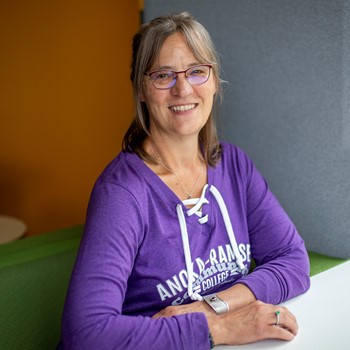New Ideas:
Ideas for new academic programs may emerge from faculty, administration, advisory committees, or as a result of strategic or academic planning.
Funding Sources:
New programs may be investigated at any time and are not limited to the Strategic Initiative Proposal (SIP) funding cycles. Alternative funding sources for investigating new programs may be grants or curriculum development funds available through Educational Services.
Areas for Investigation:
New program investigations should be coordinated through Institutional Research and include a thorough scan of environmental factors and internal and external resources needed to support a new academic program. There are two major components of new program investigation: market research and program development.
Market Research:
The three areas to be investigated in market research include occupational demand, student interest, and similar educational programs in the area.
1. Occupational demand:
BLS statistics, DEED data, Minnesota State CUPPS analysis, anecdotal evidence, employer surveys, other environmental scans to provide evidence of demand.
2. Student interest:
Publications that indicate trends supporting program development, program development in other colleges, in-class surveys of current Anoka-Ramsey Community College students, and mailed surveys of graduates or residents would provide evidence of student interest and program saleability.
3. Program duplication:
Review of Metro Alliance, non-Minnesota State, private, and for-profit college programs would provide evidence of program duplication.
If the vice president and chief academic officer determine that preliminary research indicates viability, the dean, director of new program development and departmental faculty may proceed with developing a new program proposal.
Program Development:
Dean, faculty and director develop draft program, including guidesheet, and recommend development of new courses if needed.
Articulations:
Identify transfer institutions and contact persons for potential articulation. If investigation of program duplication reveals similar programs in the area, investigate intra-agency sharing of resources. Consider Tech Prep and PSEO options in investigating 2+2 articulations.
Proposed curriculum:
Review program requirements and collect CCOs from other institutions. Identify professional associations that may provide curriculum recommendations. Convene a focus group of current professionals in the field if the curriculum is too new to have been developed elsewhere. Examine costs for facilities, equipment, technology, faculty development, curriculum development, etc.
Work Plans:
Working with the assigned dean, develop a work plan that includes methods of investigation, a timeline, budget allocations, and responsible persons.
Report:
At a minimum, results of the investigation should be reported and discussed at division meetings, advisory committee meetings (when appropriate), Educational Services meetings, and Academic Affairs and Standards Council meetings. Additional reports and/or information items may be presented at College Hour and included in the Anoka-Ramsey Community College Work Plans.
New Program Application:
If the program is determined to be viable and approved through appropriate channels, the dean and director of new program development will file the necessary new program or program redesign application with Minnesota State requesting authority to deliver the program. A plan for curriculum development and implementation will be developed including goals, persons responsible, timeline, and needed resources.
-------
History:
10.2004 Adopted
07.2017 Technical changes: MnSCU and Office of the Chancellor to Minnesota State






